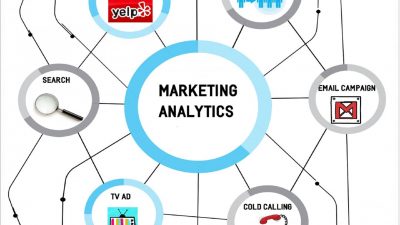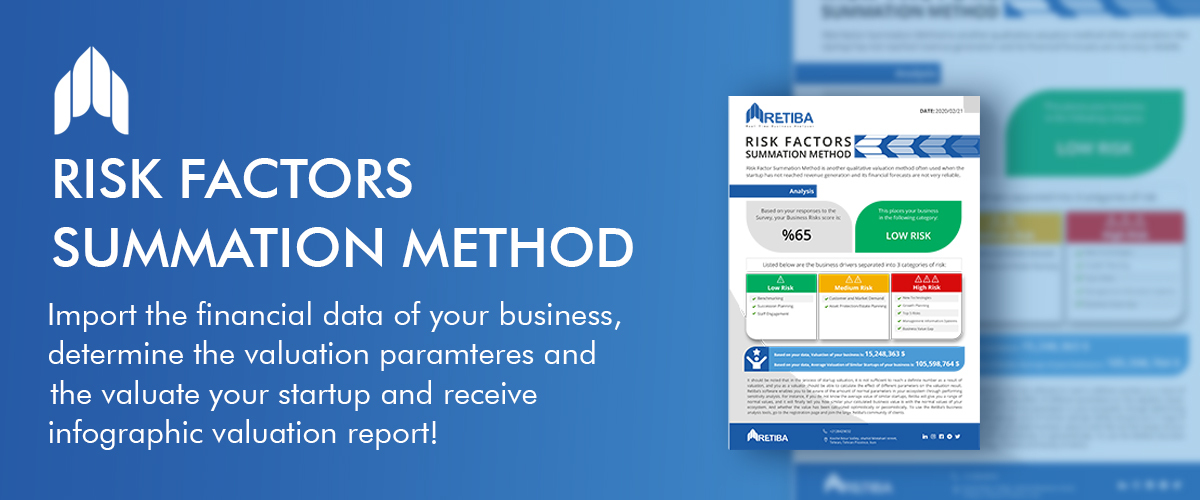Evaluating and examining different market segments serves the purpose of identifying the best available position for our business. This evaluation ultimately results in selecting one or more segments of the market and entering them. Target marketing strategy is really about determining the overall direction of the business and the efforts that are going to be made in the future. There are several strategies for target marketing, four of which are more common than others. In the following part, we will take a look at these four strategies and how to use them.
Why You Should Choose Retiba’s product?
Table of Contents
The first target marketing strategy: Integrated (undifferentiated) Marketing
This target marketing strategy is applied when customers do not differ much in terms of characteristics and behavior. In this case, the costs to be spent on market segmentation and the use of different methods will outweigh the benefits and profit increase. In this situation, the best solution is to consider a strategy for the whole market and imagine the whole market to be integrated without any segmentations.
In fact, integrated marketing is the default strategy of any company. Moreover, companies that have not yet found their customers or whose target market does not have much information about their product or service are forced to use this strategy.Therefore, through integrated strategy, the market is considered to be homogeneous with customers having similar needs and tastes.
The advantage of this method is less cost and time to produce a product or provide services in a unified and integrated way, which reduces complexities.
Target marketing for a company in a new field
A company starting its activities in a new field is usually positioned in this situation. On the one hand, there is no competitor for that company in the market; on the other hand, customers and the market do not have a proper understanding of the company’s services and goods. In addition, the lack of competition in the market helps to increase customer integration. Just like an automotive company that is the only car manufacturer in a country. In this case, people have no choice but to buy the company’s cars; as a result, whether they like it or not, they come to a common taste and opinion.
Why is an integrated strategy usually not a good option?
Of course, in many cases, an integrated market targeting strategy is not a good option. In today’s world, fewer industries and markets remain intact; as a result, presence in any industry will be accompanied by competition. In a competitive environment, this strategy can lead to the loss of different groups of customers because other companies have better understood their needs through offering them more specialized products and services, and your products and services cannot meet the needs of those specific groups.
The second target marketing strategy: Multi-segment targeting
When an industry is present in the market long enough, that market is gradually divided. That is, customers who were unanimous in the past, having the same opinions and tastes, slowly change direction and determine the characteristics of the product or service they need and want. through market segmentation, market targeting strategy must also change and design a different product or service for each audience. Typically, a company is not able to respond to all the groups in the market. Therefore, it has to select several segments of the customers and proceed according to their needs and wants. That’s why companies create different brands.
It should be noted that the selected groups are naturally selected taking into account various issues including the ability and potential of the company to compete in that sector. Market segmentation can ultimately lead to increased sales volume, greater market share and higher profitability. However, this achievement is accomplished only when the company designs its services and products better and understands the customer’s needs more carefully.
One of the consequences of incorrect implementation of this strategy is the overlap of goods and services. Sometimes, when a product is sold more than others, a decrease in the sale of other products can be noticed; in fact, the audience of the two products or services may overlap. In this case, the cost and time will be wasted due to the overlap of the company’s services and products.
One of the best examples of this target marketing strategy is : the automotive industry. Different companies around the world manufacture cars, but the range of audiences that each of these companies has targeted is very different. While some companies, such as Ferrari and Lamborghini, manufacture sports and luxury cars, there are also brands such as Volkswagen, Toyota, Hyundai, etc. which prefer to produce relatively inexpensive, small and simple cars.
The third strategy: Focused targeting
Sometimes, different segments of the market, and in fact the target audience, are somewhat similar. This, however, does not mean that the company needs to cover all of this range of customers. Some of these groups have more potential and others are less interested in business output. More importantly, the needs of some groups are in line with the company’s goals or strengths while others are in the opposite direction. For this reason, the company may decide to focus on a few more important and profitable segments and leave out the rest of the customer base. In contrast, in this strategy, customers and their needs are better understood and their exclusively suitable products and services are developed.
This target marketing strategy has been developed over the years of experience of large companies. After years of working and experiencing different strategies, some companies have found that the benefits of focusing on a small range and selecting an audience far outweigh the benefits of targeting a large range of customers and competing with a host of competing companies. The benefits of this strategy include limited resources and costs, as well as a greater focus on research and development.
Large companies are usually not interested in choosing this strategy. Targeting small groups is difficult for many companies. This provides the space for companies to grow with a focused market strategy. Of course, this strategy also has risks. For example, if larger companies decide to cover that part of the market for any reason, the competition will be very difficult. After a company’s significant success in a focused market, the attention of larger companies is drawn, and such conditions may be created.
Another problem with this strategy is the lack of capital diversification. It is clear that a company with a focused target market will use all its efforts, costs and capital in the same market, and if for any reason this market changes or shrinks, the company will face problems. The last and perhaps most important problem of this strategy is the significant reduction in flexibility. A company that starts serving a small range of customers in a particular industry and in a particular field cannot easily migrate to other segments of the market, even if it wishes to. The longer a company stays in one market segment, the harder it is to leave that segment or enter other segments. For this reason, companies that have followed this strategy at the beginning but intend to leave this strategy in the future should occasionally leave their favorite sector deliberately and work a little in other sectors so that they are empowered to face the future changes.
This is done to prevent the creation of an unchangeable format and pattern in the company and strong sense of belonging to a specific segment. Presence in other segments makes customers avoid labeling the company’s services and products and not consider the presence of that company in other departments improbable or impossible.
A good example of a company that has paid attention to this strategy is Mercedes-Benz automobile company, striving to design expensive and luxury cars to suit the needs of different groups of the more affluent customers.
The fourth strategy target marketing strategy: Customized marketing
In some markets, each customer’s needs are different, and the difference is so great that it is difficult to make a specific product with common features. These customers usually have high purchasing power in addition to their specific requests and needs, and this makes the goal of focusing on the needs of this group cost-effective. For example, advertising, research, analytics, architecture and design institutes follow the same strategy because the requests of each of their customers are different from others.
In this case, the company is usually in direct contact with the customer because the high value of each order justifies the company’s high attention to each customer and his needs.










2 Comments. Leave new
This was great as I am so tryiing to get to know my customers. Thanks!!
Thank you 🙂